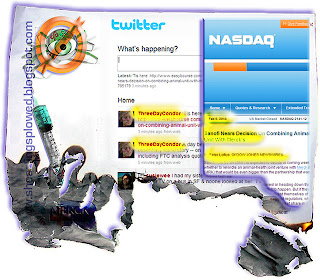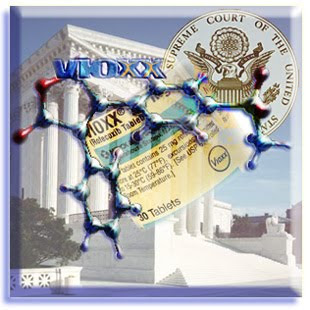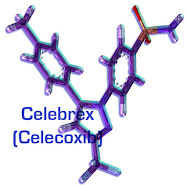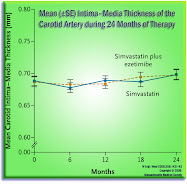
LIVE BLOG | New Merck Q2 2011 Results▲ Vertex reported very strong Incivek launch numbers last night -- it seems clear that Vertex has north of 80 percent initial share; Merck's boceprevir has less than 20 percent, despite having announced two very high-profile (read:
expensive) co-promotion partnerships in Q2 2011. Vertex is clearly going to call the shots in the new Hep C world -- posting north of 80 percent cure rates on prior non-responders. Yes, this is another legacy Schering-Plough product -- thanks, Fred and Carrie.
▲ So (sadly). . . if Merck's 2009
2010 year-end employee headcount was around 104,000
86,000, another 12,000
11,000 to 13,000
12,000 of Merck's people will be let go by 2015 -- under the accelerated restructuring announced today -- initially costing it around $5 billion to $6 billion. That's staggering, on total 2010 annual revenue of $43 billion.
▲
Does it strike anyone (else) as strange that the world's No. 2 pharma concern would have over 31 percent of its Q2 2011 EPS "
meets Street guidance" as
NON-GAAP contributors? That sounds more like a development-stage life science company, than the world's second largest (by worldwide revenue). GAAP EPS was only $0.65, but with non-GAAP (i.e., fuzzy) accounting, that line swells to $0.95. 30/95 is about a 32 percent "
addition".
▲ Q2 2011 Animal Health sales totaled $802 million -- but excluding currency translation gains (i.e., non-sustainable), that's was only 2 percent organic growth.
Pretty anemic, in a segment that is reputed (by New Merck puffery) to be largely "insulated from" recessionary pressures.▲ Q2 2011 Consumer Care showed no growth over Q2 2001. Not a great signal, given that Frazier has said he might seek a partner for this segment.
▲
Merck is using R&D spending-level adjustments to manage (or exactly match) Wall Street's expected EPS for Q2 of $0.95 -- the R&D spend will, for at least the next few quarters, either expand or contract, to meet Wall Street's EPS expectations, it would seem. Again, this makes Q2 2011 EPS pretty much an artifical (or at least highly "
malliable" number) number -- if R&D spend levels are going to be the simple "
plug figure" -- to reach the guidance EPS.
▲ Thus, Merck is guiding a full-year 2011 EPS range that is two pennies higher than Street consensus. Pretty much an artifical number -- if R&D spend levels are going to be the simple "plug figure" -- to make the guidance: slow, or reduce R&D a bit, if operating earnings are light. SHeesh, This makes EPS a question of whether the earnings have "
quality" -- or are just temporarily juiced by slowing expenses.

First up -- pre call, courtesy of
theflyonthewall.com:
. . . .Merck said it remains on track to achieve its goal of $3.5B in annual cost synergies by the end of 2012. The company said it will more aggressively reduce its cost structure. As a result, Merck announced the next phase of its Merger Restructuring Program today. As part of this next phase, the company expects to reduce its workforce, as measured at December 31, 2009, by an additional 12%-13% by the end of 2015. At the same time, Merck said it will continue to hire new employees in strategic growth areas of the business such as emerging markets. By the end of 2015, Merck now expects the overall Merger Restructuring Program to yield annual ongoing savings of $4B-$4.6B from the original estimate of $2.7B-$3.1B. . . .

 Time for my annual two week August world-travelling vacation -- I'll out of country (and unwilling to pay for international roaming, on the iPhone!), and thus off the grid for almost all of it.
Time for my annual two week August world-travelling vacation -- I'll out of country (and unwilling to pay for international roaming, on the iPhone!), and thus off the grid for almost all of it.
























